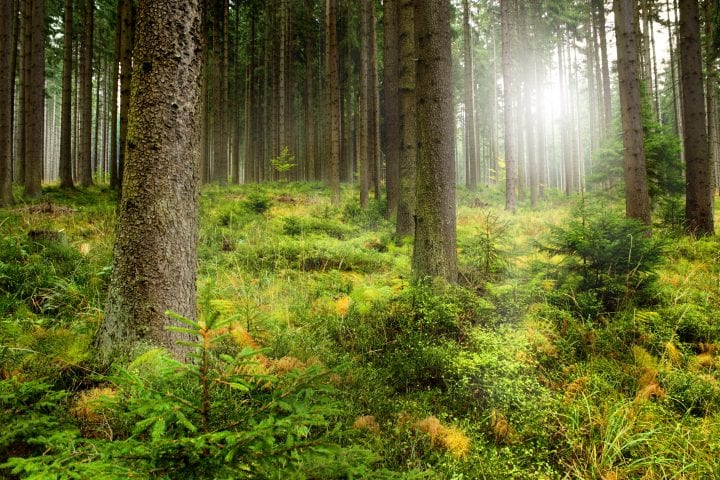Trees build themselves principally from the carbon dioxide in the air around us. Can we learn to copy their engineering secrets? An engaging graphic comic explores this compelling question.
Objectives
- Readers will understand that trees and photosynthesizing plants use CO2 in the air to build their tissues.
- Readers will contrast how nature builds with the ways that humans build.
This illustrated story by graphic artist Stuart McMillan offers a creative way to kick off learning about and helps students recognize the genius of nature all around us — even in the everyday tree.
The story begins with an account of a scientist in the 1600s who was baffled to discovered that trees do not build themselves from the matter in soil and how, hundreds of years later, science finally understood that the wood in trees is made almost entirely—if counterintuitively—from air. The comic goes on to contrast how nature builds with the ways that humans build and asks what is possible if we can learn from nature. As a supplement to the comic, the author also provides an essay on the “making of” Thin Air, which discusses his research and process of developing the final work.
Use this reading as an introduction to the topic of biomimicry while making connections to Life and Physical Science and English Language Arts. Consider having students work in pairs or small groups to break down the main messages of the comic, how the author communicates them, and discuss their own thoughts about the potential for our future to be made “out of thin air.” What opportunities, barriers, and next steps do they see?






